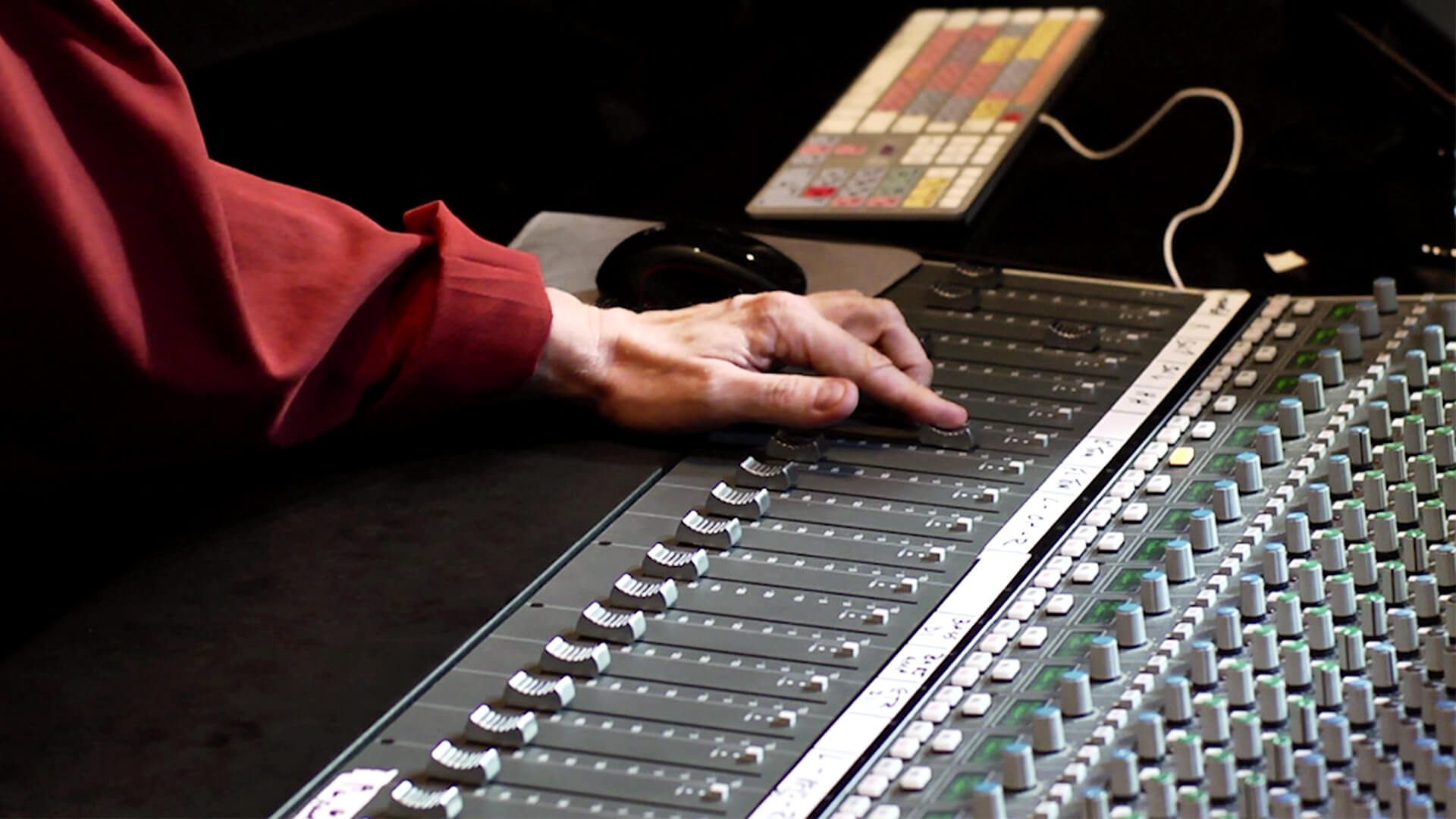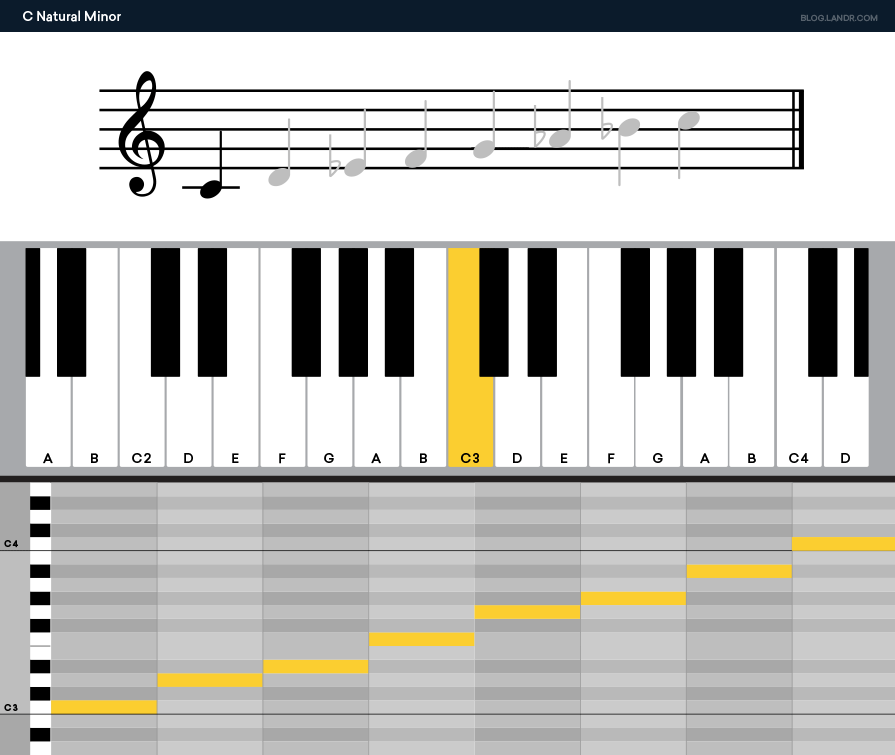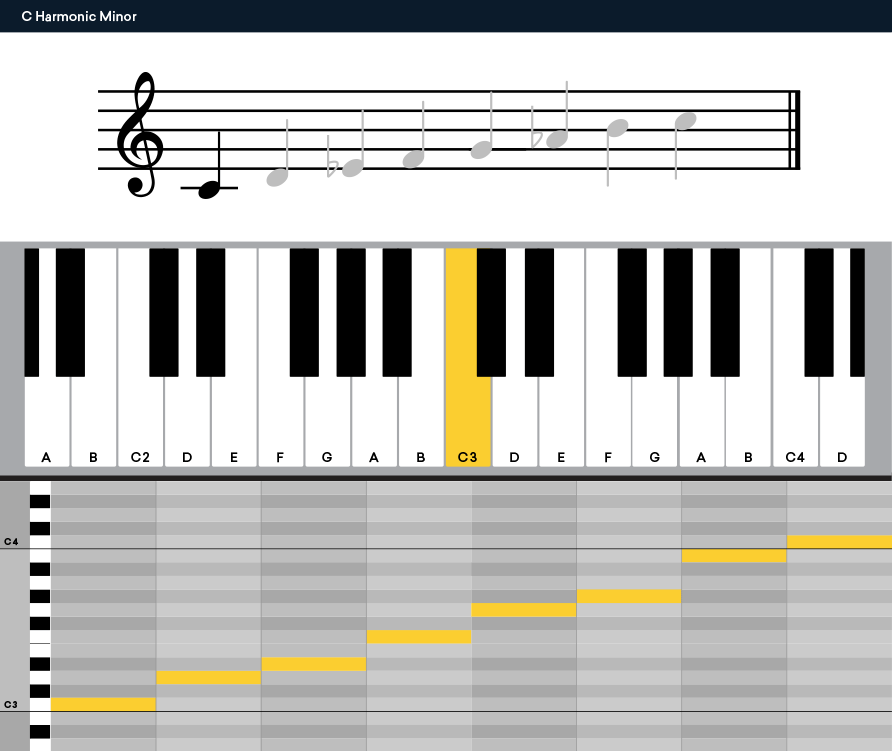The major and minor scales are the basis for any melody in western music. These foundational patterns have strong links to basic emotions for most audiences.
Major scales are normally related to happiness, while minor scales usually evoke feelings of sadness and melancholy.
The somber mood of minor scales has a strong impact on listeners. You should learn how to use them if you wish to access the distinctive environment the minor tonality creates.
However, the minor mode is more complicated than its happier counterpart. There are several different versions and discovering the key signature takes a bit more work.
In this article, I will explain everything you should know about the minor scale and how to use it in your music.
What’s the minor scale?
The minor scale is the pattern in western music usually related to sad emotions. It consists of three different variations called the natural minor scale (or Aeolian mode), the melodic minor scale and the harmonic minor scale. Each has a barely different use, however, all three scales contain the distinctive minor third relationship to the tonic in scale degree 3.
That may sound complicated, however, don’t worry. I will go through each variation on the minor scale and explain where it comes from and the way it’s used.
Natural minor scale
Natural minor is the simplest form of a minor scale.
It’s based on the following tone-semitone pattern: Tone-semitone-tone-tone-semitone-tone-tone. The pattern could be shown by writing the degrees of the scale which are altered from the major scale
It’s called natural minor because it’s equivalent to the relative minor key signature in a major key without any changes to the pattern.
Each minor key shares its key signature with an associated minor scale called the relative minor.
The relative minor is the 7 note scale starting and ending on the sixth degree of any major scale.
For instance, the relative minor of C Major is A minor. It shares the same key signature with no sharps and flats.
Playing the notes in this key signature in order will provide you with the A natural minor scale.
This relationship is also the reason why pure minor is sometimes called the Aeolian mode.
It follows the sample of producing the church modes from each degree of the major scale—however, that’s a topic for another article!
Harmonic minor scale
Natural minor has a good melancholic sound, however, there is a problem with utilizing it in harmonic progressions. It does not include a leading tone.
In major, the semitone intervals between the third and fourth and seventh and tonic of the scale are what give the dominant seventh chord its harmonic power.
These tones naturally wish to resolve up or down to a tonic chord to launch tension in a musical phrase.
But when you build a 4 note chord on the fifth degree of the natural minor scale you will not get a dominant seventh chord.
To do so you will need to boost the seventh degree of the natural minor scale by a semitone.
The resulting scale is called harmonic minor because it includes the important ingredients for V7 in minor—the important thing to functional harmony.
Harmonic minor has the tone-semitone pattern: tone-semitone-tone-tone-semitone-
Melodic minor scale
Harmonic minor takes care of the harmonic issues with the natural minor scale, however, it presents its own unique problem.
Inharmonic minor, the interval between the sixth and seventh degrees of the scale is 1.5 semitones. That is to accommodate the raised leading tone for the dominant seventh chord.
Unluckily, this augmented second step could be a little awkward for melodies or voice leading.
Melodic minor solves that problem in a unique method.
In melodic minor, the 6th and 7th steps of the scale are raised when a phrase is ascending.
If a line is descending, the seventh degree is lowered as in natural minor.
This scheme preserves smooth melodic transition between notes, without awkward skips.
Here are the alterations from the major scale:
Ascending:
Descending:
Hot tip: In jazz, melodic minor always consists of the raised sixth and seventh-degree—ascending and descending.
Minor modes
There are several modes that share the characteristic minor third scale degree which is worth mentioning in terms of sorrowful and melancholic sounds.
I have already covered the Aeolian mode in the part about the natural minor scale, however, it’s worth reiterating that this easier minor tonality could be an fascinating melodic and harmonic center in your songs.
The minor V chord that outcomes from building a chord on the fifth degree of the Aeolian mode is usually used in rock and pop:
The melodic minor scale is also closely associated with the Dorian mode with its raised 6th degree. Dorian is maybe even more common in pop music, with plenty of examples throughout music history.
Finally, the Phrygian mode also has a minor third scale degree, however, it sounds even darker and more brooding because of the lowered second scale degree.
There’s a lot to play with in terms of minor sounds!
Minor leagues
Writing music in minor is important if you wish to evoke unhappy emotions in your listeners.
Minor scales might seem complicated, but if you understand the function of each and where to use it, you will not have any trouble.
Use this guide to minor scales to begin exploring the darker, gloomier side of chords and scales.




